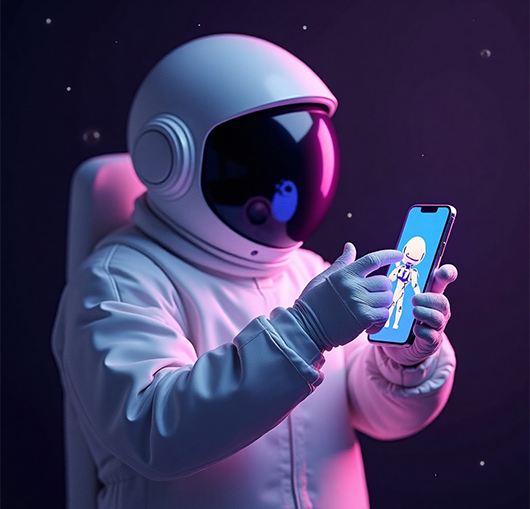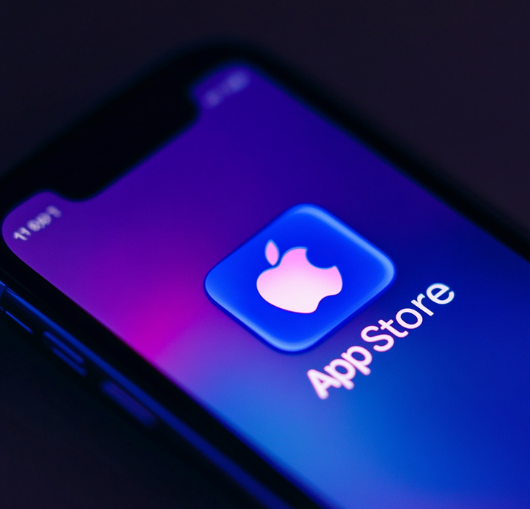How to Publish an App on the App Store in 2025?
Publishing a new app is super exciting, but getting it into the hands of actual users can be a bit tricky. First, you have to get your app onto the App Stores so people can download it.
There are two leading mobile app stores – The Apple application App Store for iOS and the Google Play Store for Android. Each has its own set of rules and requirements for submitting apps.
Let’s focus on publishing an iOS app to the Apple App Store. Once it’s on there, people can download it on their iPhones or iPads.
It’s important to know that Apple has pretty specific guidelines for submitting apps. You’ll need an Apple Developer account, and your App Store listing has to match your app’s features.
There are lots of other little things Apple looks at before they’ll give the green light to your app. Check out how to easily get your app on the App Store or how to upload an app to the App Store.
Where to Start Exactly – One Might Think.
Submitting or publishing an app on the App Store is secondary; firstly, you need to learn about aligning your iOS app according to App Store requirements. Here is a must-have requirement to publish the app on the app store.
= It’s the developer’s job to make sure that everything in the app follows Apple’s rules, including analytics assistance, third-party SDKs, ad webs, and more.
= Don’t try to cheat the review system or manipulate ratings; it will lead to the removal of your app and expulsion from the developer program.
= You must stick to Apple’s guidelines for apps made for kids.
= Apps can’t contain objectionable content like discrimination or explicit materials.
= The app’s privacy policy must meet all Apple app store requirements.
= Apps have to be fully functional and complete before submission for review.
= Apple has specific technical requirements and software standards that must be followed.
= Don’t just copy another app and make small changes to pass it off as your own.
= Apps must have a certain level of functionality that’s better than a mobile website.
Striving to Publish Your Application on Apple’s Store in 2025 – Have a Look!
Just a Short Overview
- Create an Apple Developer Account
- Get your App Ready for Submission
- Create A Listing Via App Store Connect
- Capture App Store Screenshots
- Upload the App Using Xcode
- Submit the App to Be Reviewed by Apple
We’ll cover each step in detail below:
Note: if you still find it struggling or something unknown to you. Don’t forget to enlist a reliable mobile app development company.
A Detailed Process Publish App on App Store 2025
Without wasting time or delaying, let’s stick to the app publishing process.
– Sign Up for The Apple Developer Program
You need to be part of the Apple Developer Program to propose an app to the Apple App Store. However, if you haven’t done it already, you sign up for an Apple developer account.
If you’re signing up as an individual or freelancer, you can use your Apple ID and turn on two-factor authentication. Apple will then ask for some personal info, such as your legal name and address.
To sign up for the developer program as an organization, you’ll also need an Apple ID with two-factor authentication turned on. Here’s what you’ll need to join the Apple Developer Program.
– D-U-N-S Number
– Legal Entity Status
– Legal Binding Authority
– Website
Just click “Start Your Enrollment” on this page to get going. Many of you might think about it. Does it cost money to put an app on the app store? Yes, it cost to minimal fee of 99$ to $299 yearly.
The membership fee is $99 per year and gives you access to exclusive Apple developer tools and services.
With this account, you can handle your apps for iPhone, iPad, Mac, Apple TV, and Apple Watch.
The membership also includes beta software, app analytics, testing tools, and all the necessary tools to manage your App Store listing.
Apple developers also have access to TestFlight, which allows you to gather feedback from up to 10,000+ testers before submitting the app to the App Store.
You can also ask testers using their email address or a public link.
– Prepare the App for Submission
Hey, when you’re getting your app ready for the app store, make sure to follow these steps.
Firstly, log into Xcode and set the bundle ID to give your app a unique identity. You’ll find this in the “General” menu of your project editor.
Remember, once your app is uploaded to App Store Connect, the bundle ID can’t be changed.
Then, set your app’s version number and build string in the format of [Major].[Minor].[Patch], like 9.12.1. The version number of your app will show up in the App Store.
Apple App Store Categories
Apple needs you to pick an app category for your submission. These Categories may include.
1- Books
The IOS applications store also gets you a category for books. This book may include a mix of traditional books with interactive content, like storybooks and graphic novels.
2- Developer Tools
So, your Apps work as tools for app development and management, like coding, testing, and workflow management, seamlessly fit into it.
3- Food & Drink
These are apps that recommend, instruct, or review food or drinks. They include collections of recipes, cooking guides, restaurant reviews, celebrity chefs and recipes, dietary and food allergy apps, alcohol reviews, brewery guides, and international cuisine.
4- Games
This category includes apps that offer single or multiplayer interactive activities for fun. This covers action, adventure, board, card, family, music, puzzle, racing, role-playing, simulation, sports, and strategy games.
5- Graphics & Design
This category includes apps that provide tools for creating art, design, and graphics. The category includes apps for vector graphic design, image editing, drawing, and illustration.
6- Health & Fitness
These are apps related to healthy living, including stress management, fitness, and recreational activities. It covers yoga, muscle diagrams, workout tracking, running, cycling, stress control, pregnancy, relaxing, weight loss, pilates, acupuncture/acupressure, and Eastern/Chinese therapy.
7- Lifestyle
This category includes apps covering general-interest subjects or services. It includes real estate, crafts, hobbies, parenting, fashion, and home improvement.
8- Kids (iOS and iPad, OS only)
These are apps developed especially for children ages 11 and under. Age-appropriate apps must be placed in one of three age bands based on their direct audience: 5 and under, 6–8, or 9–11. This can include age-appropriate games, interactive stories, educational materials, and magazines.
9- Magazines & Newspapers
Apps in this category offer auto-renewing subscriptions to publications or newspaper content. Select Magazines & Newspapers if you produce content using an issue-based strategy or are creating interactive versions of a printed episodic. This includes newspapers, magazines, and other recurring periodicals.
10- Medical
This category includes apps concentrated on medical education, data management, or health reference for patients or healthcare professionals. This can include apps for skeletal and muscular anatomy, medical record-keeping, diseases, symptom reference, and companion devices for health tracking like blood pressure and pulse.
11- Music
Apps for making, listening to, and sharing music, including music creation, radio, learning, sound editing, music discovery, composing, writing lyrics, and buying concert tickets.
12- Navigation
Apps that give info to help you get to a place, like driving help, walking help, maps, sea and air travel logs, tides, road maps, finding fuel, and public transit maps.
13- News
Apps that give info on current events, politics, entertainment, business, science, tech, and more, including TV, video, radio, online news sites or shows, and RSS readers.
14- Photo & Video
Apps for taking, editing, organizing, storing, and sharing photos and videos, including taking photos, editing, adding effects, sharing, printing, and making greeting cards and manuals.
15- Productivity
Apps that help you get organized or do a specific task more efficiently. Such as task and calendar management, translation, note-taking, printing, password management, cloud storage, email apps, flow chart makers, audio dictation, simulators, and data viewing.
16- Reference
Apps that help you find information, like dictionaries, thesauruses, encyclopedias, general research, animals, law, religion, how-tos, and politics.
17- Browser Add-Ons
These are apps that make your web browsing experience better. They include things like bookmarkers, password managers, ad blockers, and deals finders for Safari.
18- Shopping
These are apps that help make shopping easier and more fun. They include things like shopping apps, marketplaces, coupons, product reviews, and apps with Apple Pay.
19- Social Networking
These are apps for connecting through text, voice, photos, or videos. They include things like messaging, video calls, photo & video sharing, dating apps, blogs, and interest-based communities.
20- Sports
These apps are all about sports, whether professional or amateur. They include things like fantasy sports companions, college teams/conferences, professional teams/leagues, athlete profiles, score trackers, instruction, and sports news.
21- Travel
These apps help with travel arrangements. They include things like flight tracking, city guides, hotel/rental car/airfare shopping, vacation planning, public transportation, and travel rewards.
22- Utilities
These are apps that help with various tasks and problem-solving. They include things like calculators, clocks, measurement tools, web browsing, flashlights, screen locks, barcode scanners, unit conversion tools, password managers, and remote management.
23- Weather
These apps provide weather forecasts, alerts, and information about weather conditions. They include things like radar, forecasts, storms, tides, severe weather alerts, and local weather information.
24- Business
Many developers build apps to help run a business, manage documents, communicate, and collaborate. This category is for them.
Choose one that matches what your app is all about because Apple might remove apps that don’t fit the chosen category.
Don’t forget to get your app icon ready and have a launch screen, which gives users something to see while the app is loading and makes the experience better.
25- Education
If your app offers you an interactive learning experience for various subjects and skills, the education category would be the right fit for it.
26- Entertainment
Apple app play Store also accepts Interactive apps designed to entertain and inform users, such as for watching TV or movies.
27- Finance
This category deals with all the Apps developed for managing personal or business finances, including budgeting, banking, and investments.
It’s important to check out all of Apple’s official guidelines to get your app ready for distribution.
– Create A Listing Via App Store Connect
The App Store Connect is where members of the Apple Developer Program can upload apps, submit apps, and manage apps post-launch. It comes with everything from sales reports to analytics, test resources, and more.
Here’s a brief recap of how to do a listing for App Store Connect:
= Log into your account
= Select the “+” button from the “My Apps” menu
= Add the platform (iOS), primary language, bundle ID, and SKU
= Add the app name and category
= Provide a URL to your app’s privacy policy
= Choose your app’s pricing
You’ll also have the opportunity to determine how your app is released after the review information is approved.
You can manually sign back into App Store Connect and release it when you’re ready or select it to be published on a certain date (taking it passes certification).
Apple offers you the chance to select the app to be released immediately following its approval as well.
Take Away – These exact steps work whether you have an App Store Organization account or an Individual account.
– Capture App Store Screenshots
Make sure to keep in mind this info: get your screenshots ready for the App Store! You have two options: use basic screenshots of your application or use a mockup template to present your app.
These screenshots are a great way to show off what your app does and how it works in the App Store.
Apple has different screenshot specifications for app previews that you need to consider because there are so many devices on the market. iPhones have screens ranging from 4.7 inches to 6.5 inches, while iPads go up to 12.9 inches.
You can find all of Apple’s screenshot specifications here. Also, take a look at this API collection aid for app screenshots for more technical app store requirements.
– Upload the App Using Xcode
Make sure your app is bug-free and running smoothly before you upload it from Xcode. If the app isn’t working properly, it won’t get approved for the App Store.
If you’re creating a new app, set the version to 1.0.0.
Xcode 11 has simplified the publishing process. Previously, there were many extra steps, but now most of the work can be done in just a couple of clicks.
To get started, create a full app archive. In Xcode, go to your list of simulators and choose “Generic iOS Device” from the menu. Then choose “Product” and “Archive.” This will bundle your app, which may take some time, depending on the size.
Once the bundling process is complete, head to the “Archives” button and click “Distribute App,” which is available on the right of your screen. Then select the “iOS App Store icon” when prompted for your method of distribution.
Xcode will go through several steps to ensure that you’re not trying to upload a broken app. If something is missing or there’s an issue, Xcode will likely prevent the upload and invite you to add missing support.
You should see a confirmation on the screen when the upload is successful.
– Submit the App to Be Reviewed by Apple
Once you’ve sent your Xcode archive to App Store Connect, it might take some time to process.
Don’t worry if it doesn’t pop up in your account right away. You’ll get an email notification when the archive is good to go. This will save you from having to check constantly.
When it’s ready, just click the “Submit for Review” tap at the top right of your screen.
According to Apple, they review half of all mobile apps within 24 hours and 90% within 48 hours. If your submission is good to go, you’ll probably hear back within two days.
You’ll get a notification about any changes in the app’s status after the review.
Ending Note – What If You Are Unable to Do It Yourself?
Well, you can only publish an app on the app store if you are an app developer or an individual familiar with the ins and outs of App publishing.
Well, in this scenario, Digital Gravity comes into play as the top-tier mobile app development company in Dubai, UAE. With a group of expert and experienced mobile app developers, you can get the dependable IOS from development to publishing.
So, if you have been looking a mobile app developer – don’t forget to knock at Digital Gravity.
FAQs
How do you submit your app to the App Store in 2025?
You can easily publish your app on the App Store using these simple steps.
1- Step up your Apple dev-Acc
2- Create your App Store Presence
3- Do technical and compliance Checklist
4- Submit and Wait for Review
What is the minimum iOS version for App Store 2024?
Remember, starting April 29, 2024, any apps you upload to App Store Connect must be created using Xcode 15 for iOS 17, iPadOS 17, tvOS 17, or watchOS 10.
How do you publish your app on the App Store?
Here is the shortest breakdown of publishing apps on the Apple Store.
- Collect App Store Information.
- Create a Bundle Identifier.
- Create a Certificate Signing Request.
- Create an App Store Production Certificate.
- Create a Production Provisioning Profile.
- Create an App Store Listing.
- Create a Release Build.
- Fill in the Version Information
How much does it cost to publish an app on Apple Store?
The regular Apple Developer Program costs $99 per year, while the Apple Developer Enterprise Program costs $299 annually.
How to get your app on the App Store?
Are you looking to learn the process for publishing an app in the App Store? It’s just six simple steps:
- Sign up for the Apple developer program.
- Get the app ready to submit.
- Create a listing using App Store Connect.
- Snap some screenshots for the App Store.
- Use Xcode to upload the app.
- Submit the app for review by Apple.


